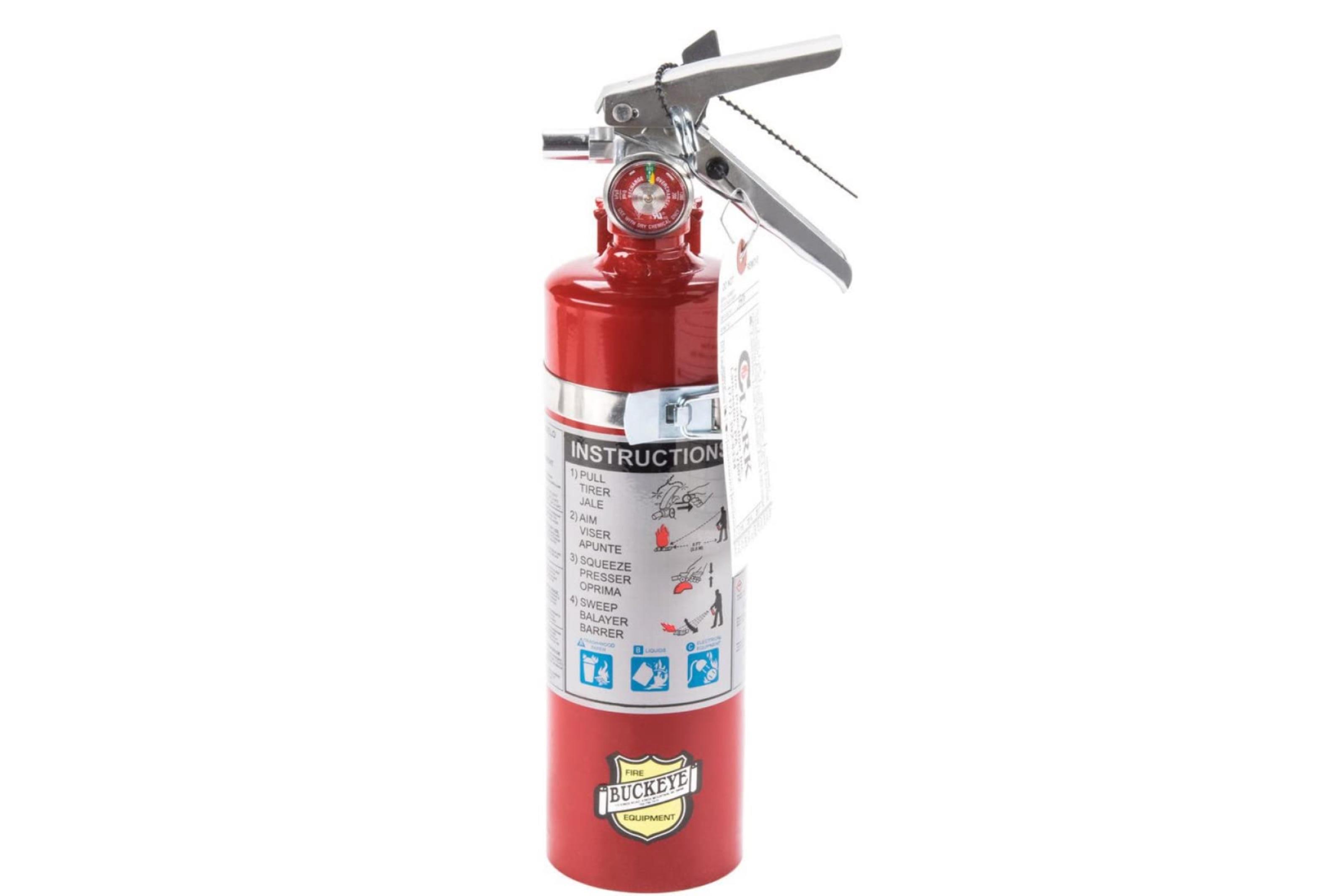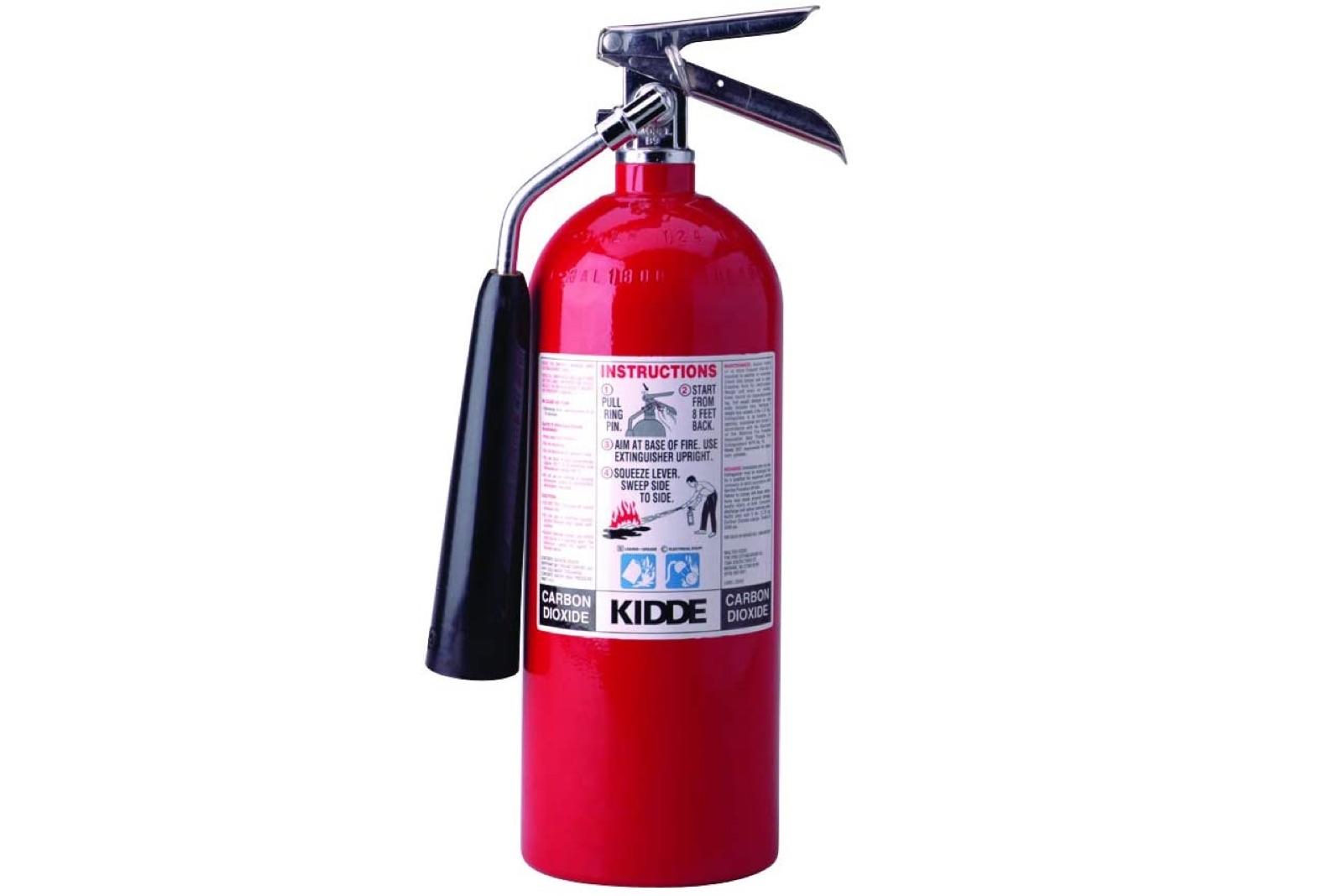Over the past year, people have been busy setting up home office and home learning spaces. And what started out as something that seemed temporary has, for many, become a semi-permanent, or perhaps even a permanent, thing. Maybe you did what everyone else did and grabbed a free table and chair, an extension cord or two, and build a workspace.
But there’s one bit of kit — an essential, in my opinion — that many have forgotten in the midst of all the hard work of setting up a work or learning space.
A fire extinguisher.
Fires are, thankfully, quite rare. But fires do happen, and throwing in extension cords and chargers and a bunch of electronics into a space can increase that chance.
Sure, it’s a small increase, but it’s an increase all the same.
A fire extinguisher can literally be a life saver.
While most electronic devices give you warnings before erupting into flames — noxious fumes, arcing sounds, and even flashes — things can erupt into an enthusiastic inferno without warning.
This is where having a fire extinguisher handy could mean the difference between life and death.
Tip: It’s also a great idea to have a fire extinguisher in the car, but it needs to be quickly and easily accessible! Keeping it in the trunk under a bunch of stuff is pointless!
A great multi-room option
Class: A, B, and C | Refillable: Yes | Contents: Dry powder | Quantity: 4 | Price: $119 |
A great solution for the home.
The four-pack means there’s enough to go around without breaking the bank. Each comes with a bracket to make wall mounting easy.
Pros:
- Refillable
- Easy to read gauge
- Convenient four-pack
Cons:
- Rather bulky
No dry powder mess to clean
Class: B and C | Refillable: Yes | Contents: Carbon dioxide | Quantity: 1 | Price: $181 |
Carbon dioxide fire extinguishers smother the fire in a gas rather than a dry powder, which means a lot less mess and clean up after the fact. It also doesn’t damage things that haven’t already been damaged by the fire.
Pros:
- Doesn’t leave a mess like dry powder does
- Refillable
- Perfect for electrical fires
Cons:
- Not suitable for wood and paper fires
- Expensive
A compact solution for the home, office, garage, or car
Class: A, B, C, and K | Refillable: No | Contents: Foam | Quantity: 3 | Price: $70 |
Not the biggest or the most expensive, but an effective tool against small fires. Can also be used on a wider array of fires, making it great for the home, office, kitchen, and even the garage and car.
Pros:
- Small
- Class K support, so great in the kitchen
- Cheap
Cons:
- Foam leaves a messy residue
- No wall bracket
But what kind of extinguisher do you need?
I mean, they all look much the same. Red cylinders fixed to brackets on the wall.
The main thing to look for when buying a fire extinguisher is the class of the extinguisher. For home environments you’re likely to be tackling burning paper, wood, and fabrics, electrical fires, gasoline or other liquid fuel fires, and oil fires (in the kitchen).
Fire extinguishers come in different classes. The classes applicable to home use are:
- Class A – Wood, paper, cardboard, fabrics, plastics
- Class B – Flammable liquids such gasoline and diesel
- Class C – Electric and electrical fires
- Class K – Cooking oil and grease
Big or small?
It can be tempting to go for the biggest extinguisher you can find, but remember, you’re very unlikely to be tackling a big fire (and don’t get brave, leave that to the professionals). A home fire extinguisher is for small fires, to buy you time, or to help you get out.
So, better to pick one that’s not going to take up a huge about of room or going to end up buried under stuff or in a closet.
Refillable vs. disposable?
Some fire extinguishers can be refilled after use. These will also need periodic inspection and maintenance at specified intervals.
Disposable fire extinguishers are one-use, and have a fixed lifespan, after which they will need disposing.
Our process
In my experience with electrical fires and fire extinguishers, having a decent fire extinguisher gives you three things:
- The ability to put out small fires
- It buys you time to get out and call the fire department
- It gives you a tool to help you get out if your exit is blocked by fire
The extinguishers selected above ticks these boxes and at the same time are also cost-effective (it’s better to buy an extinguisher, than to save up for a more expensive one in the future!).
Another factor is ease of use. In the midst of a fire is not the time to be familiarizing yourself with how things work. Most extinguishers are easy to use — point and shoot — but it’s a good idea to get up to speed on how your extinguishers work before you need them!
Also worth considering
A fire extinguisher is no good if you’re not aware of the fire in the first place. This means that you need to fit smoke detectors as your first line of defense, and also, depending on how your property is heated, a carbon monoxide detector. Also, for grease fires in kitchens, a fire blanket may be more useful and make less mess than a fire extinguisher if a pan catches alight.























